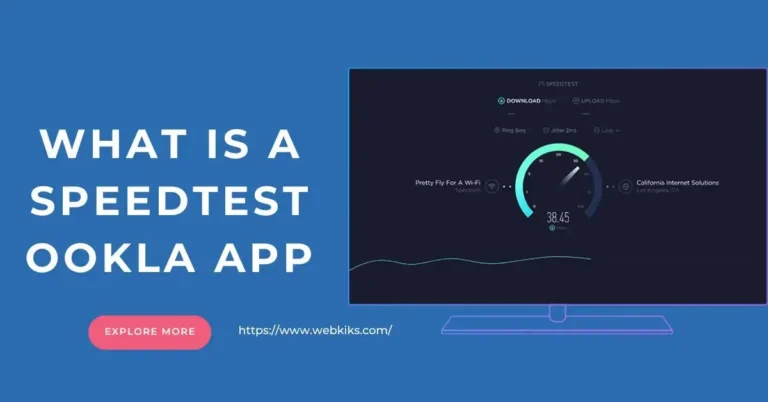In today’s data-driven and technology world, data science has emerged as one of the most sought-after skills. With its applications ranging from business analytics to healthcare, data science offers a promising career path for those willing to dive into the world of data.
However, learning data science can seem daunting due to its interdisciplinary nature and the vast array of tools and techniques involved. This comprehensive guide will break down the steps to learn data science effectively.
Basic Steps To Learn Data Science
Most people want answers to the question of how to learn data sciences. For this reason, it is good to know about basic steps to learn data sciences easily.
1. Understand the Fundamentals
Before diving into the technical aspects of data science, it’s crucial to have a solid understanding of its fundamentals. This includes concepts such as statistics, mathematics, and programming. Brushing up on your knowledge of probability, linear algebra, and calculus will provide you with a strong foundation for understanding the more advanced concepts in data science.
2. Learn Programming Languages
Python and R are the two most popular programming languages in the field of data science. Python is widely favored for its simplicity and versatility, while R is preferred for its statistical capabilities. Learning both languages can be beneficial. But, it is good to focus on one initially is advisable. There are plenty of online resources, tutorials, and courses available for learning Python and R, catering to beginners as well as those with prior programming experience.
3. Dive Into Data Analysis And Visualization
Once you have a grasp of the programming languages, it’s time to delve into data analysis and visualization. Pandas and NumPy libraries in Python, along with the dplyr and ggplot packages in R, are essential tools for data manipulation and visualization.
Understanding how to clean, preprocess, and explore data sets is a fundamental skill for any data scientist. Visualization techniques such as histograms, scatter plots, and heatmaps can help in gaining insights from data and communicating findings effectively.
4. Master Machine Learning Algorithms
Machine learning forms the backbone of data science, enabling predictive modeling and pattern recognition from data. Start with the basics of supervised and unsupervised learning algorithms, such as linear regression, logistic regression, decision trees, and clustering algorithms.
Scikit-learn and TensorFlow are popular libraries in Python for implementing machine learning algorithms, while the Caret and Keras packages are commonly used in R.
5. Gain Practical Experience
Theory is essential, but practical experience is paramount in mastering data science. Work on real-world projects and datasets to apply your knowledge and hone your skills. Participate in Kaggle competitions, contribute to open-source projects, or undertake internships to gain hands-on experience. Building a portfolio showcasing your projects and accomplishments can greatly enhance your credibility as a data scientist.
6. Explore Advanced Topics
As you progress in your data science journey, explore advanced topics such as deep learning, natural language processing (NLP), and reinforcement learning. These areas offer exciting opportunities for specialization and can open doors to niche roles in industries such as healthcare, finance, and autonomous vehicles.
Online courses, research papers, and workshops can provide insights into these advanced topics. Overall, it is a good point to explore all kinds of information about all the best possible skills and get access to your point.
7. Stay Updated and Engage with the Community
The field of data science is rapidly evolving, with new techniques, algorithms, and tools being developed regularly. Stay updated with the latest trends and advancements by following blogs, attending conferences, and joining online forums such as Stack Overflow and Reddit. Engaging with the data science community not only keeps you informed but also provides opportunities for networking and collaboration.
8. Continuously Learn and Adapt
Finally, remember that learning data science is an ongoing process. Keep exploring new areas, experimenting with different tools and techniques, and never shy away from challenging yourself. Be open to feedback, learn from your mistakes, and continuously strive for improvement. Adapting to new technologies and methodologies is key to staying relevant in the dynamic field of data science.
Skills Need To Learn For Data Science
Data science is a multifaceted field that requires a diverse set of skills to excel. Whether you are a beginner or looking to advance your career in data science, acquiring and honing these skills is essential for success. Let’s explore the key skills needed to thrive in the world of data science.
Statistical Analysis
Understanding statistical concepts such as probability, hypothesis testing, and regression analysis is fundamental to data science. Proficiency in statistics allows data scientists to draw meaningful insights from data and make informed decisions.
Programming
Proficiency in programming languages like Python, R, and SQL is crucial for data manipulation, analysis, and visualization. Python is particularly popular for its simplicity and extensive libraries for data science tasks, while R is favored for its statistical capabilities. SQL is essential for querying and managing databases, a skill often required for data retrieval and preprocessing.
Data Wrangling
Data rarely comes in a clean and structured format. Data wrangling involves cleaning, transforming, and preparing raw data for analysis. Proficiency in tools like Pandas (Python) and dplyr (R) for data manipulation is essential for effective data wrangling.
Machine Learning
Machine learning forms the core of many data science applications, enabling predictive modeling and pattern recognition. Understanding various machine learning algorithms such as linear regression, decision trees, and neural networks, along with their implementation using libraries like scikit-learn (Python) and Caret (R), is indispensable for data scientists.
Data Visualization
Communicating insights effectively is a crucial aspect of data science. Proficiency in data visualization tools and techniques, such as Matplotlib, Seaborn, Plotly (Python), and ggplot2 (R), allows data scientists to create compelling visualizations that convey complex information clearly and intuitively.
Domain Knowledge
While technical skills are important, domain knowledge is equally crucial in data science. Understanding the specific industry or domain you’re working in enables data scientists to ask the right questions, interpret results in context, and derive actionable insights.
Problem-Solving
Data science projects often involve tackling complex problems and finding innovative solutions. Strong problem-solving skills, coupled with critical thinking and creativity, are essential for identifying patterns, formulating hypotheses, and devising effective data-driven strategies.
Communication
Data scientists must be able to communicate their findings and insights to stakeholders effectively. This includes not only presenting results visually but also explaining complex technical concepts in layman’s terms. Strong written and verbal communication skills are invaluable for conveying the significance of data-driven insights to non-technical audiences.
Continuous Learning
The field of data science is constantly evolving, with new tools, techniques, and methodologies emerging regularly. A commitment to continuous learning and staying updated with the latest trends and advancements is essential for data scientists to remain relevant and competitive in the industry.
Conclusion
In conclusion, learning data science requires dedication, perseverance, and a willingness to continuously learn and adapt. By mastering the fundamentals, learning programming languages, gaining practical experience, and staying updated with the latest trends, you can embark on a rewarding career in data science. So, roll up your sleeves, dive into the world of data, and unleash your potential as a data scientist.
However, it is good to learn the essential skills mentioned above are key to becoming a proficient data scientist. Whether you are just starting your journey in data science or looking to advance your career, investing time and effort in acquiring and honing these skills will undoubtedly pay off in the long run. So, roll up your sleeves, sharpen your skills, and embark on an exciting journey in the dynamic world of data science!
Frequently Asked Question
How To Learn Data Science For Free?
There are several ways to learn data science for free.
You can take advantage of online resources such as Coursera, edX, and Khan Academy, which offer free courses in data science and related topics.
You can also access free tutorials and resources on websites like Kaggle and DataCamp.
Additionally, many universities and colleges offer open access to their data science courses and materials through platforms like OpenCourseWare.
Finally, you can join online communities and forums to connect with other data science enthusiasts and learn from their experiences and insights.
How To Learn Data Science For Beginners?
It is good to start with learning basic programming (Python or R), then delve into statistics and data manipulation. But, practice with real-world projects and continuously expand your knowledge through online courses and resources.
How To Learn Data Science At Home?
Learn programming languages like Python or R, then explore online courses, tutorials, and datasets to practice data analysis and machine learning techniques at your own pace. Engage with online communities and forums for support and guidance throughout your learning journey.
Is Data Science Full Of Coding?
Yes, data science does involve a significant amount of coding. Data scientists use programming languages like Python, R, and SQL to manipulate and analyze large datasets, build predictive models, and create data visualizations. Understanding programming and being proficient in coding is essential for data scientists.
What Does A Data Scientist Do?
A data scientist is responsible for collecting, analyzing, and interpreting large sets of data to identify trends, patterns, and insights that can help inform business decisions. They use statistical and machine learning techniques to uncover valuable information from data and then communicate their findings to stakeholders.
Data scientists may also be involved in building and maintaining data infrastructure, developing algorithms, and creating data visualization tools to make the data more accessible and understandable. Overall, their role is critical in helping organizations make data-driven decisions and maximize the value of their data assets.
Why Become A Data Scientist?
Becoming a data scientist can be a rewarding career choice for those who have a passion for analyzing and interpreting data to solve complex problems. Data scientists are in high demand across industries and can command high salaries. The field also offers opportunities for continuous learning and professional growth.
Additionally, data science plays a critical role in informing decision-making and driving innovation in business, healthcare, and other fields. Overall, becoming a data scientist can provide a fulfilling and challenging career path for those with strong analytical and problem-solving skills.
What Is The Average Salary Of A Data Scientist?
The average salary of a data scientist varies depending on factors such as experience, location, and the industry in which they work. However, according to the U.S. Bureau of Labor Statistics, the median annual wage for data scientists was $122000 in April 2024. Keep in mind that this figure can fluctuate based on a variety of factors.






